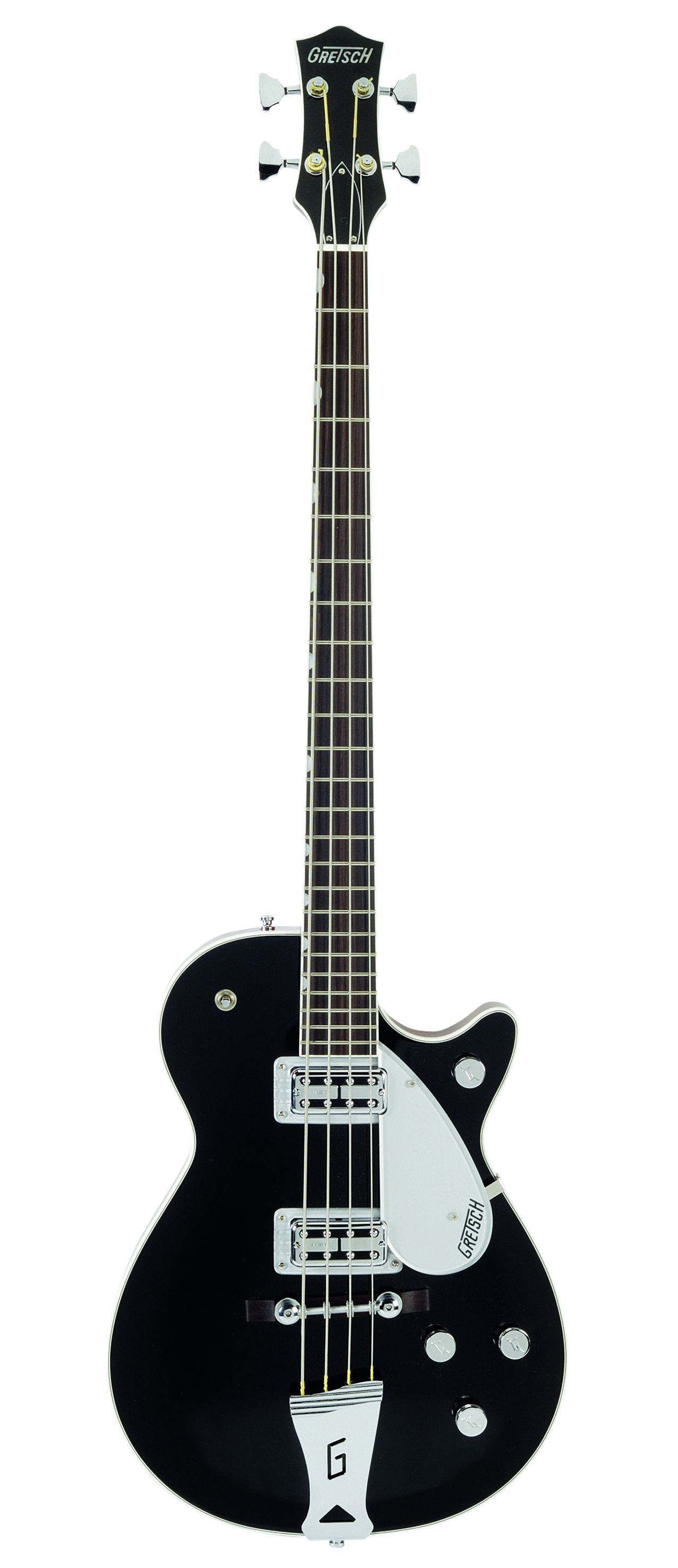MusicRadar Verdict
We heartily applaud any manufacturer that can retain its identity whilst embracing new ideas and production methods, and with the Thunder Jet Bass Gretsch has truly played a trump card.
Pros
- +
Classic design. Comfortable and easy to play.
Cons
- -
Twin tone controls would add greater general appeal.
MusicRadar's got your back
Even on the very first impressions this has got to be one of the best-looking basses that Gretsch has ever produced - a far cry from some of the more ungainly models from the distant past.
It's a good sign of how much Gretsch has bloomed as a company in the last few years, making the most of modern technology and production methods.
Under the direction of parent company Fender, Gretsch has taken the sensible route of reproducing some of its best-loved and truly classic models mixed in with a few fresh ideas and designs. The quality level has also improved and the current ranges are nothing short of spectacular as a result.
For you designation buffs out there the 6128 model number of the Thunder Jet was originally allotted to the Duo-Jet guitar, the B denotes that it's the bass version and the TV refers to the Thomas Vincent Jones hand-wound pickups. Somewhat surprisingly this is the first time this model has been given the bass treatment.
The single cutaway design and uncluttered body surface give instant visual appeal that really invites you to pick up and play it.
All those unnecessary knobs and switches that festooned some of the early bass models are stripped away to leave just the essentials. Well almost... even now it possesses three volume controls plus a fourth rotary for overall tonal adjustment.
And there's also a three-way pickup selector switch. The black finish is restricted to the facia and the headstock, while the neck and semi-hollow body (337mm wide, 44.45mm deep) retain the natural look of the mahogany under a deep gloss lacquer.
Want all the hottest music and gear news, reviews, deals, features and more, direct to your inbox? Sign up here.
The looks
Although the fingerboard is ebony, on this particular instrument it's not as black as you might expect, it looks more like really dark rosewood but it still feels absolutely sumptuous. The neat thumbnail (or half-moon) inlays are a subtle touch and the edge bound body and neck finishes the whole thing off beautifully.
Gretsch guitars became a real driving force in the fifties and many of the appointments here hail from that hallowed era, like the curious design of the Bass Space Control bridge.
With its wooden base, screw-threaded support and round slotted string adjusters, it's far from being a technological innovation yet it works fine. It's also known as a roller bridge and sits well with the classic 'G-Cutout' tailpiece and 'G-Arrow' knobs.
The Thunder Tron pickups also smack of past times - particularly with the silver surrounds that match the pickguard.
On the more practical side the Thunder Jet is fitted with Schaller straplocks for extra security and the Sperzel locking tuners approximate the distinctive shape employed on Gretsch guitars for many years. If looks could kill this machine would be deadly.
Sounds
Basses that follow the lines of popular guitar designs are by and large a total disaster when it comes to playing comfort, yet that is most definitely not the case here. Light, evenly balanced and very easy on the fingers, this is a superb bass to play.
The way it sits comfortably into your body, combined with a slim profile neck, seduces you into thinking this is a regular-scale bass where in fact it's significantly shorter.
As a result you get the benefit of improved balance without any of the short-scale disadvantages, and there's no loss of natural string tone either. In fact, the bass speaks clearly and authoritatively in an unmistakably Gretsch fashion.
One reason for the distinctive sound is the unusual circuitry that employs a master volume control. It's the one sitting all on its own on the lower body cutaway and is, of course, a Gretsch trademark.
Yet far from being retained for its design value alone it's actually one of the most important factors in making Gretsch basses sound the way they do.
When you first play, rather than offering any obvious benefit to the sound it actually seems to inhibit the delivery as backing it off does tend to choke the output signal; but it's where that unique sound is generated.
However, if you do find it tonally inhibiting then simply leave it flat out when playing a gig and just adjust the individual pickup volumes.
In spite of the complexities of having three volumes, when it comes to fundamental tonal qualities the Thunder Jet actually stays well within the middle ranges rather than offering anything excessive at the top or lower frequencies.
It won't crack your eardrums or rumble your nether regions but it will provide a variety of super fat tones that will suit all styles of playing with perhaps the exception of slap bass.
The TV Jones pickups are a great choice and individually perform with a pleasing robustness and give the opportunity for the bass to rasp and bubble in the lower regions as well as providing some fruity mid tones.
When switched together the hollow quality reveals itself, more subtly than on many basses but with that singing warmth which is always pleasing to these ears.
